Many great new inventions made their way to mainstream applications because they offered effective solutions to long-standing problems in everyday life. Some examples are penicillin, the camera, the can opener, the toothbrush, radio, batteries, and the vacuum cleaner. On the other hand, some invention ideas came to the spotlight because they were nothing more than interesting novelties. Either way, a lot of these inventions and consumer products have generated millions for their inventors, as well as the other parties associated with them and their creation. The following is a short list of popular products designs that generated millions of dollars for the original inventors.
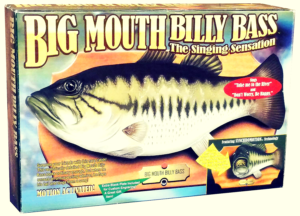
1. Big Mouth Billy Bass by Gemmy Industries
The idea for the Big Mouth Billy Bass was inspired by a simple mounted game fish, which is all that this decorative piece appears to be at a glance. After a visit to a Bash Pro Shop, Joe Pellettieri – then Vice President of Product Development at Gemmy Industries – conceived of a decorative largemouth bass toy that would sing and move.
As bizarre as it was, the Big Mouth Billy Bass came to existence on December 16th, 1998 and hit the store shelves on January 1st, 1999. It was made of a plastic mechanical skeleton and latex rubber, allowing it to move its tail and head quite realistically. It could sing a pre-loaded audio file with a press of a button. In the year 2000 alone, sales of the singing fish reached a million units. Although the popularity has tapered off in recent years, you can still find Billy Bass in stores.
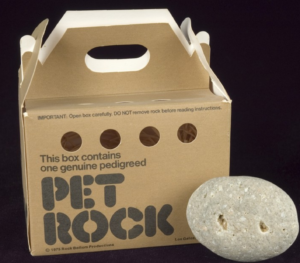
2. The Pet Rock by Gary Dahl
In just six months after its release date, the Pet Rock generated $15 million in profits. Gary Dahl – the person behind the adorable yet pointless (some would argue) rock companion – thought he had an idea of a perfect pet after hearing their friends complaining about their own. As it was revealed to nobody’s expectation, Dahl’s idea of the perfect pet for everyone was a piece of rock.
The Pet Rock became available mid 1975; each one was sold for $3.95, profiting Dahl a whopping $3 per sale. The hype lasted for about six months, during which about 1.5 million units were sold, enough to make Dahl an almost instantaneous millionaire. Believe it or not, the Pet Rock was just gray pebble that Dahl purchased from construction suppliers. Some of the pebbles were painted to make them look like strange little creatures, but the design process stopped there.

3. The Snuggie by Scott Boilen
In case you are one of the marketing skeptics who refuse to believe that ridiculous TV commercials can boost product sales, you may want to reconsider that thought and revisit the Snuggie. There is nothing overwhelmingly interesting about the Snuggie. It is just a full-sized blanket with sleeves after all.
However, the commercial showed how useful it could be while roasting marshmallows outdoors or watching TV inside. Boilen actually admitted that the product was ridiculous, so a good way to market it was with equally ridiculous advertisements, too. All joking aside, such a marketing strategy worked and so far the Snuggie has generated more than $200 million in profits since late 2008 when the sleeved blanket became available for the first time.
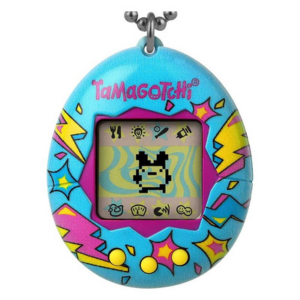
4. Tamagotchi by Bandai
Just like the previous Pet Rock invented by Gary Dahl, the Tamagotchi seemed to be marketed for specific consumers who couldn’t handle the responsibility of taking care of a real pet. Despite the silliness of the idea that you could nurture non-living pets, the Tamagotchi prompted serious zeal back in the 1990s.
It was far from the ideal pet for kids (or adults), but it did help to scratch the itch for some sort of interaction with something other than another human. Unveiled in 1996, more than 76 million units were sold as of 2010. It was a digital toy, so maybe the craze could be justified.
Once the toy was turned on, the user could press some buttons to feed or play with the digital creature living on the black and white LCD screen. The virtual pet grew and changed into various forms the longer the user cared for it. Bandai has rereleased the original Tamagotchi in Japan and each unit is available for around $17.
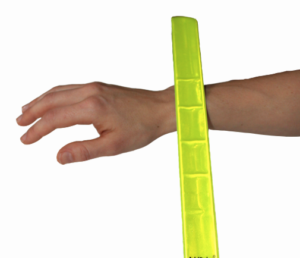
5. Slap Wraps by Stuart Anders
Invented in 1983 by Stuart Anders, a high school shop teacher from Wisconsin, the Slap Wraps were a major commodity in the United States during the late eighties to early nineties. Sold by Main Street Toy Company, orders were pouring in, totaling five million units of Slap Wraps in 1990. They were sold for about $1.30 wholesale or around $2.50 retail.
The Slap Wraps were stainless steel bi-stable spring bands covered in fabric, plastic, or silicone of various patterns and colors. Each bracelet had two faces for reversibility. For kids, it was a great simple toy that gave a satisfying slap on the wrist anytime they wore it. For teenagers, the patterns and colors meant you could match it fashionably with any outfit. By 1990, Main Street Toy Company estimated that between 10 million to 15 million cheap knockoffs had been sold too. Popularity faded out after reports of injuries due to low-quality sharp-edged steel used in one of the shoddy imitations. Parents freaked out and the craze ended.
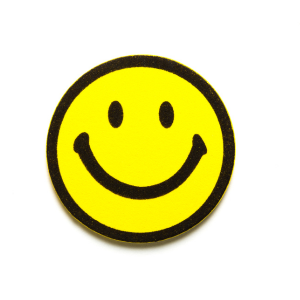
6. Yellow Smiley Faces by Bernard and Murray Spain
Drawn originally by Harvey Ross Ball in 1963, but then modified and patented by brothers Bernard and Murray Spain in 1971, the yellow smiley faces we are all familiar with brought millions of dollars in revenue to its creator. The brothers ultimately owned the patent right for the revised image – by simply adding a “Have a Happy Day” to the smile – and sold a great number of accessories from buttons to bumper stickers adorned with the image. By late 1971, the brothers had sold more than 50 million items.
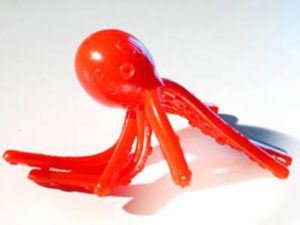
7. Wacky Wall Walker by Ken Hakuta
The Wacky Wall Walker was not actually invented by Ken Hakuta, but he purchased the right for the toy from its original maker for $100,000. His mother sent a version of what would be known in the United States as Wacky Wall Walker from China. Realizing its potential marketing opportunity, he bought the rights and began selling it in the U.S. So far, the sticky elastomer toy has made him at least $80 million.

8. Slinky by Richard James
Famously known by his neighbors and coworkers as a clumsy engineer, Richard James was eventually able to monetize his own shortcoming with the Slinky. As the story goes, he dropped a tension spring on the floor and suddenly realized he had just possibly developed an idea for an invention. He introduced the Slinky in 1945, and sold about 400 units in just an hour and a half. Between 1945 and 2005, more than 300 million Slinky units were sold, generating more than $250 million.
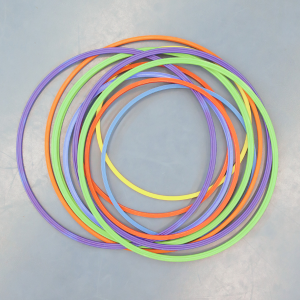
9. Hula Hoop by Arthur K. Melin and Richard Knerr
Before it became known as the circular plastic toy (sometimes filled with water or sand inside the actual hoop), the traditional Hula Hoop was used as an accessory in traditional storytelling dance performed by Native Americans.
Arthur K. Melin and Richard Knerr started the idea of exercise hoops and manufactured the accessories from HDPE (high-density polyethylene) in 1957. With nation-wide marketing and giveaways, they managed to sell 25 million hoops in just four months. Within only 2 years, 100 million units were sold. During the 1950s, Carlon Products Corporation – one of the first to manufacture plastic Hula Hoops – had to make 50,000 units each day.
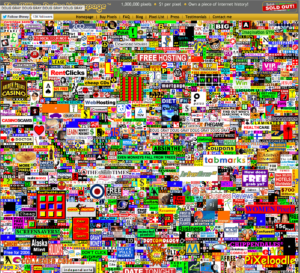
10. The Million-Dollar Home Page by Alex Tew
In 2005, Alex Tew – a 21 year old student from Wiltshire, England – created a website that consisted of a million pixels for sale (1000 x 1000 pixels). Each block of 10 x 10 pixels block was available for $1. He also wrote a background story in which he said he would use the money earned from the website for college. The idea paid off; in just over a year, the pixels were sold out and he earned a million dollars. The page is still up and running, but the pixels have all been sold.
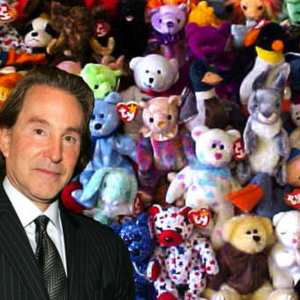
11. Beanie Babies by Ty Warner
Created by Ty Warner – who is also the founder of Ty, Inc. –Beanie Babies are stuffed animal plush toys. The nine original toys were released in 1993, including Legs the Frog, Spot the Dog, Squealer the Pig, Splash the Whale, Flash the Orca, Patti the Platypus, Chocolate the Moose, Pinchers the Lobster (some models came with the tag Puncher), and Brownie the Bear (later renamed Cubbie).
Sales were slow initially but popularity grew nonetheless. Warner decided to produce miniature versions of the originals in 1996 and sold them inside Happy Meals from McDonalds. During the late 1990s, Beanie Babies were highly sought-after collectibles. Warner has generated at least $3 billion from the toy line to date.

12. Barbie Dolls by Mattel, Inc.
Ty Warner is not the only person who has built success from toys. Ruth Handler, co-founder of Mattel, generated even more revenue from the toy she introduced in 1959 called Barbara Millicent Roberts, or more often referred to as simply Barbie. The physical appearance of Barbie was based on a cartoon character featured on Bild Zeitung, a newspaper distributed in West Germany.
After about a decade of its introduction, Barbie became a subject of harsh criticisms regarding her unrealistic body proportions and the way she represented materialism. As a matter of fact, Barbie’s existence has almost always created controversies, and of course huge sales. By 1993, Mattel earned around a billion dollars annually from the sales of Barbie dolls alone.

13. Doggles by Roni Di Lullo
After noticing her dog squinting in sunlight, Roni Di Lullo set out to conduct simple experiments to build sunglasses for her pet. She made various models using sport goggles and sunglasses before she created a pair that fit perfectly for her dog’s head.
A pair of Doggles is made of polycarbonate lenses for UV protection and elastic straps. Now manufactured by Doggles Company, you can also order one with prescription lenses for your dog. Prices range from $20 a pair to a whopping $90 depending on size and lens quality. The company has sold millions of pairs so far.
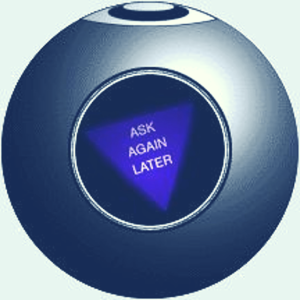
14. Magic 8 Ball by Albert Carter and Abe Brookman
Albert Carter’s mother was a self-proclaimed clairvoyant in Cincinnati and used a device of her own invention to help people find answers to their questions. Inspired by his mother, Carter was determined to create fortune-telling equipment as well, and so he did.
Following a series of ideas and developments, the round-shaped device (it is just a toy, really) was used by Chicago’s Brunswick Billiards as a promotional item. To make things more interesting, the company changed its rather boring crystal-ball into a billiard ball. Mattel currently owns the right to the Magic 8-ball and sells about a million units of it every year as of 2012.
15. SantaMail by Byron Reese
The idea was so simple and borderline fraudulent: have a portal address in the North Pole, claim to be Santa Claus, and charge every parent $10 for every letter sent to their children. Byron Reese is a genius. Since the conceptualization of this very idea in 2001, he has sent more than 500,000 letters to children all around the world. In the process, he has accumulated millions of dollars.
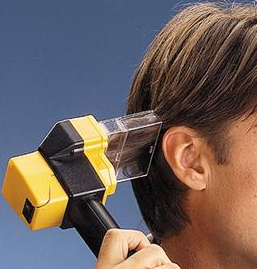
16. The Flowbee by Rick Hunts
Another simple idea that worked, sort of: attaching a hair-clipping device to a vacuum cleaner hose so that you don’t have to clean up after the mess. Developed and patented by Rick Hunt in 1986, around two million units were sold between the early 1990s and 2000.
17. The Koosh Ball by Scott Stillinger
During the Christmas of 1988, the Koosh Ball was one of the dominating commodities in the marketplace. Millions of balls were sold, making Scott Stillinger, the inventor, a millionaire. Stillinger did not intend to create multimillion-dollar merchandise when he wrapped rubber bands around a soft rubber ball.
His only intention was to make the ball easier for his kids to throw and catch. However, he ended up filing a patent for the toy in 1988 and becoming a rich man soon afterward. Hasbro now owns the rights to market and sell the Koosh ball.
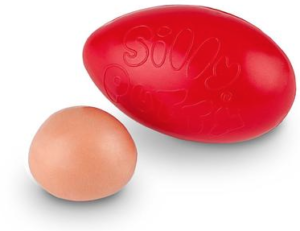
18. Silly Putty
It remains unclear who invented Silly Putty. The men most often accredited for its invention are Harvey Chin, Earl Warrick, or James Wright. One thing is certain: none of them popularized the silicone polymer toy. The credit for that went to the marketing consultant who had to borrow money to repackage the toy before selling it.
Sales were poor, but popularity suddenly increased after New Yorker magazine had featured the toy in one of its articles in an August 1950 publication. Just three days after that, Peter Hodgson sold more than 250,000 packages for $1 a piece. It was so popular in the 1960s that even Apollo 8 astronauts brought Silly Putty to space to help alleviate boredom. In 1976, Hodgson died, leaving behind a considerable fortune, including his $140 million estate.

19. Furby by Dave Hampton and Caleb Chung
The hideous and deceptively “artificially intelligent” toy that looked like a crossbreed between a hamster and an owl took Dave Hampton and Caleb Chung 18 months to develop and create. They called it Furby. Tiger Electronics bought the rights to the toy and began selling it in 1998.
It was marketed as an artificially intelligent toy because it could learn English. In practice, Furby was indeed programmed to speak less of its native gibberish language over time and replace it with English words. When it became available for the first time, the price tag was $40 but increase in demand allowed the company to bring up the price to hundreds. In just several years after its release, around 40 million units were sold.
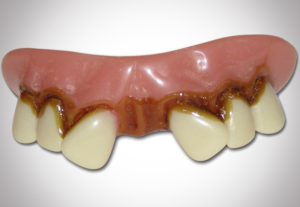
20. Billy Bob Teeth by Jonah White and Rich Bailey
One is a redneck and the other is a dental student. This is the combination that brought Billy Bob Teeth to popularity. Jonah White saw that Rich Bailey made realistic-looking yet disgusting sets of fake teeth when he was at a college football game in 1994. White also realized that it was common for Southern Illinois University dental students to make teeth-themed pranks for each other.
Since Bailey only drew a small crowd, White persuaded him to go into business together. They did it, and became rich men. Bailey left the venture on good terms to practice real dentistry in 1999, while White went on to accumulate more money from the invention. A year after Bailey left Billy Bob Products, the toy had its best year and brought in $7 million in sales, partly thanks to the Austin Powers merchandising deal. At least 20 million sets of teeth have been sold to date, generating more than $40 million in revenue.

21. Pillow Pets by Jennifer Telfer
As the story goes, the real inventor of the multimillion-dollar Pillow Pet is actually the son of Jennifer Telfer, who stuffed animals as pillows so often that they became flattened. It inspired her to make him exactly what he’d already created for himself: a flat and wide stuffed animal toy with a Velcro strap.
When not used as a pillow, fastening the Velcro strap from side-to-side would make the toy a little bit fluffier just like typical stuffed animals. Together with her husband, she founded the CJ Products, Inc., the wholesaler of Pillow Pets because the products themselves were manufactured by another company. The first Pillow Pet was the “Snuggly Puppy.” She tried to sell the pillows at a mall kiosk, but did not make many sales. Success came immediately when she began using television advertising aired on cable channels. At the end of 2009, partly due to the commercials, the company earned gross sales of at least $7 million.

22. Plastic Wishbone by Ken Ahroni
Thanks to Lucky Break Wishbone Corp., even vegans can enjoy the satisfying snap of a turkey wishbone after Thanksgiving dinner. According to Ken Ahroni, founder and owner of the company, his only inspiration for the now-popular product was an ordinary family squabble over who got to break the wishbone. Before starting his own company, Ahroni ran a consulting firm to help Christmas-light makers meet quality standards, so he was familiar with seasonal products and plastics.
He called eight plastic companies to request samples of material that breaks easily. After some testing, Plastic Wishbone hit store shelves in 2004. Two years later, the company earned almost $1 million in sales. The company also won a copyright infringement case against Sears in 2007 and was awarded $1.7 million in damages; they had a lucky break indeed. The Plastic Wishbone is still available today in various colors and packages.
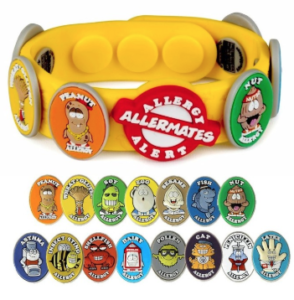
23. AllerMates by Iris Shamus
Because wearing medical ID tags can be too serious and daunting for kids, Iris Shamus created a friendlier version of the same thing. When her son was diagnosed with severe food allergies, she decided to make some sort of accessory to remind other people (including teachers and caretakers) about his condition. That’s how AllerMates was born.
Gaining popularity as a cute bracelet attached with characters to depict the wearer’s allergens, the company now has various forms including tags and necklaces. There are also more characters available to depict not only allergies but also other medical conditions such as asthma, diabetes, and autism. Iris Shamus invested $25,000 to start the business, and she has earned many millions from AllerMates so far.

24. HeadOn by Sirivision
Originally developed in Austria and distributed by Miralus Healthcare, the topical solution was supposed to relieve headache if applied directly to the forehead. Of course, this was just a marketing exaggeration, which was not helped with the product’s unbearably annoying TV commercial. Despite this, HeadOn – now owned and distributed by Sirivision – was a financial success. The repetitive dizzying ad aired in 2006, and the product generated $6.5 million in sales the next year.
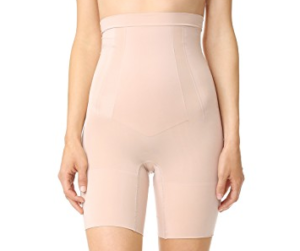
25. Spanx by Sara Blakely
Inspired by cut-off pantyhose, Spanx has turned into a multimillion-dollar invention. Sara Blakely – the creator, founder, and owner of Spanx – was getting ready for a party one night when she realized that the heat and humidity of Florida made pantyhose very uncomfortable to wear, at least for her. She cut the feet off the pantyhose and went on her way.
She then saw an opportunity from her modification; using the $5,000 saving from her job as fax machine sales person, Blakely moved to Atlanta and began developing a finer version of the modified underwear. In 2000, Spanx, Inc. was born. In June 2014, the company claims it makes $250 million in annual revenue. Sara Blakely’s net worth was $1.14 billion as of 2017.
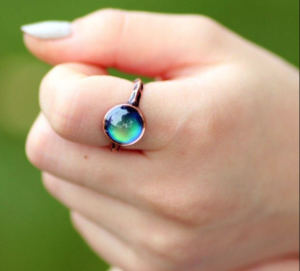
26. Mood Ring by Josh Reynolds and Maris Ambats
Invented in 1975 by two New Yorkers, the Mood Ring immediately created a big craze throughout the decade. The ring contained a bond of quartz stones and liquid crystals, which changed colors depending on ambient temperature. Since changes in wearer’s psychological state also affects body temperature, the ring has always been believed to “color-code” the wearer’s mood.
The silvery setting originally sold for a modest $45, but the gold version cost $250. Bonwit Teller became the first to sell the jewelry. Within just months, the products sold like crazy and generated the first million for its inventors. It was a trendy fashion item back then (and probably still is) worn by popular public figures such as Muhammad Ali and Barbra Streisand. In terms of popularity, the Mood Ring has seen better days, but you can still buy them today from many retailers.

27. Happy Smile Trainer by Japan Trend Shop
In case you forget how to smile, the Happy Smile Trainer has you covered. It was a real Japanese sensation marketed as a tool to improve the angle and balance of cheeks and the overall face. By wearing it just five minutes a day, the product allegedly enhances muscles in the mouth and jaw to help you create a perfect Joker-style smile (the one played by Jack Nicholson, of course).
Happy Smile Trainer is just a silicone mouthpiece, which when worn or bitten down on, forces the face to make as perfect a smile as it can. There is no science to confirm its efficacy and whether there is indeed a standard for a smile, but selling at around $52 apiece, Japan Trend Shop – the item’s main distributor – surely has a big smile on their way to the bank.
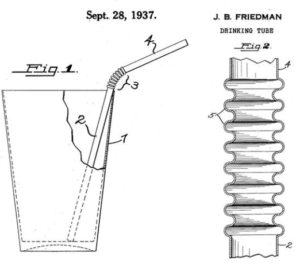
28. Bendy Straw by Joseph Friedman
If the Smithsonian Magazine website tells you to appreciate an invention, you’d better believe the invention is arguably extraordinary, and the flexible straw is no exception. On one regular day in the 1930s, Joseph Friedman took his daughter to the Varsity Sweet Shop in San Francisco. He realized that she was struggling to drink her milkshake from a regular straw because it was positioned too high for her to comfortably reach from the chair she sat on.
Friedman, already known as an inventor at that time, inserted a screw into the straw and wrapped a dental floss around it following the screw threads. When the screw was removed, the straw had prominent corrugation on it, which could bend conveniently without restricting the liquid flow inside. Friedman patented the idea in 1937 and founded the Flex-Straw Company in 1939. By solving his daughter’s milkshake dilemma, he became a millionaire. In 1969, the company was sold along with its US and foreign patents, licensing agreements, and trademarks to Maryland Cup Corporation.

29. Dog Wigs by Leah Workman
Monetizing pet owners’ tendencies to go overboard when it comes to accessorizing their beloved animals, Leah Workman created a multimillion-dollar business with her line of dog wigs. Inspired by the handmade pet costumes she saw in Japan, she brought the industry to the United States and earned great success from it.
Many different dog wigs are available, modeled after haircuts of real people such as Lady Gaga and Katy Perry. Selling for $29 to $39 a piece, she helps make dogs and cats all around the world look stylish (or weird) on their owners’ Instagram and Facebook pages.

30. Loom Bands by Cheong Choon Ng
Sometimes it doesn’t really matter if your invention gets steady media exposure, as long as it has already generated millions of dollars by the time the craze is over, just like the Rainbow Loom invented by Cheong Choon Ng. The Loom Band is essentially an intertwined set of rubber bands of various colors that require exceptionally good looming skills to create or a device that can make it for you, which Ng invented in 2011.
Thanks to YouTube advertising, popularity grew and by December 2012 sales revenue hit $40 million. During its best years, the Loom Band (and the Rainbow Loom) was worn by many public figures including Pope Francis, David Beckham, and Kate Middleton. By September 2014, Choon’s Design –Ng’s company – was worth more than $130 million.

31. Google by Larry Page and Sergey Brin
It is so popular that the term “Google” has now been used not only as the name of a company, but a verb to say “look it up on the Internet.” One of the best things about Google – as an Internet search engine, at least – is that everyone can use it free of charge.
The company earns revenue from displaying ads, however. In this way it is like television, where the channels earn their income from commercials. After a restructuring in 2015, Sergey Brin and Larry Page are now the President and CEO of Alphabet Inc., respectively, the parent company of Google. As of 2018, Brin’s net worth is $49.6 billion, while Page’s is $51 billion.

32. Microsoft by Bill Gates
While it seems like everybody on TV and in movies is using an Apple device, nearly 72% of all computer users are still happy with Microsoft’s Windows. Bill Gates carved his way into wealth as a computer enthusiast as a teenager, who was not really interested in formal education.
He founded Microsoft with Paul Allen and started their venture in MITS (Micro Instrumentation and Telemetry Systems), but then decided to make Microsoft an independent company and build a partnership with IBM.
Through this partnership, the MS-DOS was born, which later developed into Microsoft Windows. Around 90% of new computers and laptops sold today are pre-installed with Windows OS. While he is no longer active in Microsoft’s day-to-day operations, Gates will always be remembered as one of the principal founders of the company. As of June 2018, Gates’ net worth is $93.2 billion.

33. Facebook by Mark Zuckerberg
Still on the subject of Internet-based inventions, Mark Zuckerberg well deserves to be mentioned in this list. His brainchild is Facebook, the social media website that has redefined the way people communicate and interact in day-to-day social life, politics, and business. Used by more than 2 billion people all around the world, Facebook also earns a good portion of its revenue from displaying ads. In 2017 alone, Facebook’s net income was just a little less than $16 billion. Zuckerberg’s net worth is $76.7 billion as of June 2018.
34. Amazon by Jeff Bezos
Amazon was just a small online book store but is now the biggest giant of them all. It grew so fast that it has become a leader not only in the Internet industry but also taking up a major portion of the information technology paradigm with its computer tablet, cloud storage, and streaming services. The online store remains Amazon’s most well-known business, but books make up only a small part of the store’s entire catalogue. Name one thing – anything at all – and Amazon probably has it for sale. The man behind Amazon is Jeff Bezos, currently worth $139.2 billion.
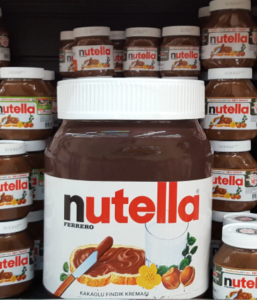
35. Nutella by Michele Ferrero
In the 1940s in Piedmont, Italy, there was a short supply of cocoa due to the rationing in World War II, so Pietro Ferrero, who owned a bakery in the area, used hazelnut as an alternative ingredient to replace chocolate in some of his products. His son, Michele Ferrero, modified the ingredients and revamped the marketing efforts in 1963 to introduce the hazelnut-based cream to other European countries.
The resulting product was Nutella. The first jar of Nutella left the factory in 1964 and the brand remains popular today. While the Ferrero SpA also makes other products, including TicTac, Kinder Joy, and Ferrero Rocher, Nutella is one of its biggest sources of revenue. Michele Ferrero was the richest man in Italy in 2008, surpassing Silvio Berlusconi. The Bloomberg Billionaires Index also listed him as the 20th richest person in the world in 2014.

36. Polo Ralph Lauren by Ralph Lauren
At the age of 26, Ralph Lauren had developed great interest in fashion and designed a necktie that was unusually wide, with European flair. His employer at that time did not see the product as commercially viable, and this encouraged Lauren to start his own company. He sold neckties on his own at different shops under the “Polo” brand. Neiman Marcus helped Lauren establish his name by ordering 1,200 neckties.
Finally in 1967, he opened his own store in Manhattan and expanded his products. In 1971, the Polo logo was first seen. Fast forward to 2017, Ralph Lauren’s net worth was $5.8 billion. While the Ralph Lauren Corporation has expanded its line of fashion products widely to include fragrances and children’s clothing, the Polo Ralph Lauren remains the flagship brand of the company.

37. WhatsApp by Jan Koum and Brian Acton
Almost immediately after iOS and Android gained popularity, many computer engineers began developing mobile applications for both platforms. With millions of apps listed in both App Store and Google Play, the competition is fierce and tight among developers. Jan Koum and Brian Acton have proven to be two of the best with their creation, WhatsApp.
It started as a free messenger app for smartphones (and remains free for users today), but Koum and Acton became billionaires in 2014 when Facebook purchased WhatsApp for $19 billion as part of its Internet.org project.

38. Dyson Vacuum Cleaner by James Dyson
Thanks to James Dyson, everyone can eliminate the monthly expense of purchasing replacement bags for their vacuum cleaners. The bag-less version invented by Dyson has helped millions of families clean their homes more efficiently in a less cumbersome way. It is believed that Dyson created more than 5,000 prototypes before he built a working version of his idea.
By then, no manufacturer or distributor in UK was willing to handle the production process because the replacement bag market was too good to let go of. Having to sell his first vacuum cleaner, the G-Force, in Japan, the product actually won the 1991 International Design Fair Prize in the same country. In 1993, instead of trying to convince other manufacturers in the UK, he set out to start the Dyson, Ltd. Soon enough, another one of his products, called Dyson Dual Cyclone, became the fastest-selling vacuum cleaner in the UK By the early 2005, Dyson cleaners also become market leaders in the US In 2017, Dyson’s personal net worth was more than $10.43 billion.

39. Gummy Bear by Hans Riegel Sr.
Originated in Germany as Gummibär, the Gummy Bear has been a pleasant treat in the US since the 1980s. Riegel invented the candy in 1922 and manufactured it by Haribo, which he had founded two years earlier. He died during World War II and the company was passed on to his son, was also named Hans Riegel.
More serious international expansion started in the 1960s and the candy entered the US market in the 1980s. Currently, Haribo operates 15 factories, which produce approximately 100 million gummy bears every day.
40. eBay by Pierre Omidyar
Proof of how the Internet has great power to change the way people live and conduct their business is all around, including on eBay. Since it launched in 1995, eBay remains one of the largest online market spaces. Unlike Amazon, which generally focuses on new items, eBay is more like a flea market where sellers from all around the world can put literally anything, from a used pair of socks to a brand-new Rolex, on sale. Pierre Omidyar, the person behind the creation of eBay, has earned more than $11.1 billion for his creation.

41. Red Bull by Dietrich Mateschitz and Chaleo Yoovidhya
Dietrich Mateschitz was working for Blendax in 1982 when he made a trip to Thailand. He met with Chaleo Yoovidhya who was the then owner of T.C. Pharmaceutical. Before the two met, Chaleo already had a successful beverage product line called “Krating Daeng” in his country. Mateschitz later realized that the drink cured his jet lag.
In 1984, they founded Red Bull GmbH together and invested US $500,000 each in the company. Red Bull turned into an international brand, mainly marketed towards party crowds and athletes. Chaleo Yoovidhya died in 2012 at the age of 88, but he was surely a billionaire. Dietrich Mateschitz remains a businessman to this day with a net worth of $21.2 billion as of January 2018.

42. Public Storage by Bradley Hughes
The idea of self storage has been around since ancient China, but Brad Hughes saw an opportunity to make the same venture more successful than ever. During a trip to Texas, he realized that local real estate developers were doing well by providing storage facilities outside Dallas. He brought the idea back to California and started more or less the same business with Kenneth Volk in 1972. Initially, they called the company Private Storage Spaces Inc.
As it turned out, consumers were scarce because the sign in the self-storage warehouse read “private storage” instead of “public storage.” Once they realized the mistake, they changed the name to “Public Storage” to match the acronym “PS” already written in the paperwork. The company remains the largest brand of self storage services in the United States. Hughes is now worth $2.6 billion.
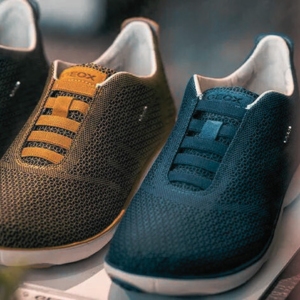
43. Geox by Mario Moretti Polegato
Brought up to eventually take over his family’s wine making business, Mario Moretti Polegato took sharp turns in his career to becoming a professional shoe designer. While in Reno for a wine industry conference, he decided to go for a run to get some exercise. It was a hot day and his feet were excessively sweating, to the point where he could not stand the smell of them. He later came up with the idea of a pair of shoes with holes in the sole to let the moisture escape, and therefore reduce the smell. Polegato called it Geox and has generated around $2 billion (as of 2014) from the brand.
44. Apple by Steve Jobs
Some may consider it unfair to credit only Steve Jobs to the entire success of Apple Inc. However, he was one of the original co-founders and also the person with enough entrepreneurship capacity to bring back the company from the brink of collapse in 1997. More of an innovator rather than inventor, Steve Jobs put his name on the patents of many popular products for examples USB Mouse, iPod, and iPhone. At the time of his death in 2011, his net worth was estimated at $10.2 billion.

45. PayPal by Peter Thiel & Elon Musk
Formerly established as Confinity in 1998, PayPal was created by a team of four: Peter Thiel, Max Levchin, Ken Howery and Luke Nosek. Two years later, Confinity merged with X.com, a banking company founded by Elon Musk. The company was then renamed PayPal. After the merger, Elon Musk ended up as the largest shareholder with 11.7% of shares.
In 2002, eBay purchased PayPal for $1.5 billion in stock, of which $165 million went to Musk. All the original founders of Confinity have become either millionaires (Nosek with $300 million) or billionaires. Elon Musk continues his way as inventor and businessman with a net worth of more than $19 billion as of June 2018. Tesla and SpaceX are only two of many projects he currently leads.
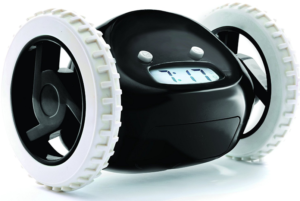
46. Clocky by Gauri Nanda
The modern alarm clock has one simple weakness: the snooze button. It does no good when the alarm goes off for you to press the snooze button and go back to sleep. Gauri Nanda understood this dilemma very well and decided to build an alarm clock that could actually run away from you before you hit the snooze button. Ironically enough, snooze function was probably the biggest improvement implemented to the alarm clock. Invented in 2005, Clocky generated $2.2 million revenue in 2007, $1.5 million in 2008, and $900,000 in 2009.
47. Innovative Market Systems by Michael Bloomberg
Formerly a general partner at Salomon Brothers, life was not bad at all for Michael Bloomberg. Even after he was laid off by the company, he still owned $10 million worth of equity. His major breakthrough came in 1981 with the Innovative Market Systems, which run on Bloomberg’s simple idea: information is commodity. He sells financial information in readily usable forms such as graphs and documents to Wall Street players. The company was renamed Bloomberg L.P. in 1987 and is still active today. Michael Bloomberg had been rich long before he invented the IMS. As of January 2018, his net worth is $50.8 billion.

48. Oracle by Larry Ellison
Inspired by a book called A Relational Model of Data for Large Shared Data Banks written by Edgar Codd, Larry Ellison co-founded the Software Development Laboratories (SDL) with Ed Oates and Bob Miner in 1977.
The company was renamed Relational Software Inc. in 1979, Oracle Systems Corporation in 1982, and again Oracle Corporation in 1995. It offers big data processing, cloud services, software delivery, and documentation among other things. A two-time college drop-out, Ellison is now one of the richest people in the world with a net worth of $62.4 billion as of January 2018.
49. Salesforce by Marc Benioff
Having been in a variety of positions in Oracle for about 13 years, Marc Benioff founded Salesforce in 1999. Instead of offering a wide-range of products and services, his company focuses on one thing: cloud computing, or more specifically the SaaS (software as a service) part of it. In the initial public offering in June 2014, the company raised $110 million. Larry Ellison, the founder of Oracle Corporation, was one of the early investors. The business and company took off, and Marc Benioff is now worth around $4.4 billion.
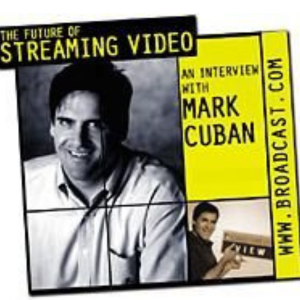
50. Broadcast.com by Mark Cuban
Starting his venture in the dotcom boom in 1998 by funding AudioNet (created by Chris Jaeb and Todd Wagner), Marc Cuban only needed two years to become a billionaire. In 1998, AudioNet became Broadcast.com which helped launched the first live stream of the Victoria’s Secret Fashion Show in 1999.
Yahoo purchased the company in the same year for $5.7 billion in stock. Cuban continues doing business with various startup companies and currently is the owner of NBA’s Dallas Mavericks. His net worth is $3.8 billion.

1. Alibaba by Jack Ma
After a visit to the U.S. in 1995, Jack Ma was captivated by the Internet and all it seemed to offer. In the same year, he founded a company with his wife focusing on creating websites for other companies. Together they made US $800,000 from an initial investment of just US $20,000. In 1999, he started Alibaba, a company that would lead him to the better part of his life.
Alibaba was and still is an online marketplace where sellers can list their products for consumers to see. It helps eliminate the costs related to middlemen as people can buy directly from the exporters themselves. It was a promising venture that raised Alibaba a total of US $25 million from Softbank and Goldman Sachs in the same year it was founded. Currently, Ma is the executive chairman of Alibaba. He is also one of the richest people in China and the world with a net worth of US $42.7 billion.
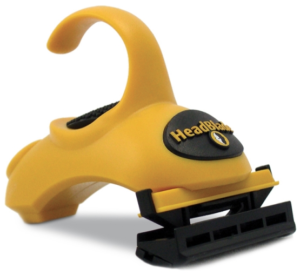
52. HeadBlade By Todd Greene
It is important to use only the right tool for any job, including shaving your head. Todd Greene, the founder of HeadBlade, was inspired by how difficult it was to clean shave the head using regular razors, so he devised a better tool for it. His blade fit better in the hand and moved more easily on the scalp with minimum risk of shaving cuts.
In 1998, the first prototype was ready. He found a manufacturer to make the products and set up an online store to sell them. In 2000, TIME magazine listed it as one of the best designs. HeadBlade continues to develop and refine its shaver design. It now has around 20,000 stores across the United States and an annual revenue between $7 million and $10 million.

53. Dell by Michael Dell
Before Dell, people who bought desktop computers relied on pre-built specifications from the sellers. While the same business practice still exists today, Michael Dell figured out a method to bypass salespeople in the sense that he could help users purchase computers directly from the manufacturers.
One of the most appealing parts of the business model is that consumers are allowed to custom-assemble the components to the specifications they desire. Founded in 1984, Dell had $6 million in sales just a year later. Dell became re-privatized in 2013 for $24.9 billion. Michael Dell himself is now worth $23.5 billion.
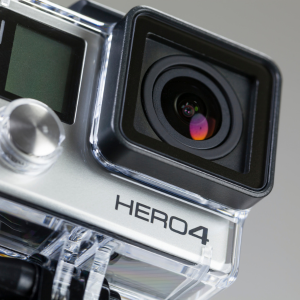
54. GoPro by Nick Woodman
Just like many other amateur surfers, Nick Woodman wanted to take photographs as if he was a professional. It was this idea that inspired him to become creative with cameras, especially the attachment components of it.
The result was GoPro. The first version of the popular brand was roughly a camera with a wristband, but development over the years and marketing efforts in sports events have made popular today. When the company went public in 2014, Woodman became a billionaire, albeit for a short while. As of February 2018, Woodman’s net worth was around $270 million.

55. Snapchat by Evan Spiegel, Bobby Murphy, and Reggie Brown
All three of the inventors of Snapchat played their part in creating what was originally known as Picaboo, an app with a unique function that could delete picture messages automatically after having been sent and read. Since the name had already been taken by another company, they later called it Snapchat.
The app was launched for the Android platform in October 2012 and for iOS in June 2013. As of June 2018, Spiegel and Murphy have a net worth of $3.1 billion each. Brown was forced out of the company and he received $158 million in cash as a lawsuit settlement from Snap Inc.
56. Dropbox by Drew Houston and Arash Ferdowsi
Gaining popularity as a startup in the “Y Combinator” platform, Dropbox now has a market value of $12 billion. The original idea of an online file storage service came to Drew Houston when he was on a bus from Boston to New York and realized that he did not have his thumb drive with him. Dropbox officially launched in 2008 at TechCrunch’s Disrupt. It went public in 2018, and currently Houston and co-creator Arash Ferdowsi have a net worth of around $4 billion and $1.1 billion respectively.
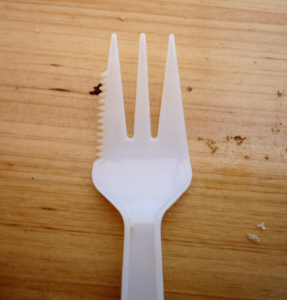
57. Knork by Mike Miller
A little 8th grade boy was watching an employee of a restaurant cut pizza effortlessly with a pizza cutter, and he wondered why he was struggling to eat pizza with a fork. That little boy was Michael D. Miller. In 2001, when Miller was in college, he materialized the idea by creating the “Knork” as in half knife half fork.
With a $10,000 loan from his grandfather, he established a company and developed a much better prototype of the Knork. By 2011, the product line had expanded and generated $2 million in sales.
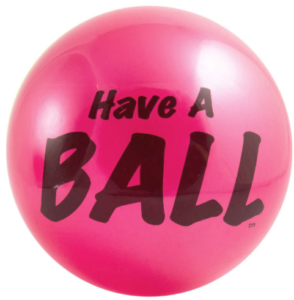
58. SENDaBALL by Michele Sipolt Kapustka
An idea could be so simple that no one would think of it as a feasible business model. Take the SENDaBALL as an example. It all started when Michele Sipolt Kapustka, the founder of the company, saw a bin full of bouncy balls, wrote a message on one, and mailed the ball to a friend.
She was convinced that the idea could be an interesting business model as an alternative to conventional greeting cards. SENDaBALL became a formal business entity in 2003 and so far it has generated millions in gross sales.

59. Uglydoll by David Horvath and Sun-Min Kim
Pretty Ugly, the company from which the popular Uglydolls are distributed, is the brainchild of David Horvath and Sun-Min Kim. It was founded in 2002 and inspired by an ugly doll, hand-sewn by Kim, based on an image drawn by Horvath.
When Horvath brought the doll to a store in Los Angeles, the owner of the shop was interested enough that he asked for more. The store owner was Eric Nakamura, also the owner of Giant Robot magazine. Kim hand-sewed more dolls, which took months to complete. Since its debut release, Uglydolls have brought more than $100 million in sales.
60. Geese Police by David Marcks
While working at a golf course in Greenwich, Connecticut in 1986, there were just too many geese in the course that it created a nuisance for David Marcks. At one point, he had to chase away 600 of them or more, but nothing he tried seemed to work well enough. He later came up with an idea of using a dog to help him with the job and it was a success. It did not take long until people noticed his creative effort and began asking for his help. David Marcks founded Geese Police, which now has 18 branches in various states in the U.S. and earns a little less than $3 million annually.
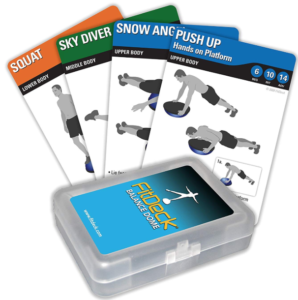
61. FitDeck by Phil Black
A card game doesn’t have to be played while sitting at a desk after all, just like the FitDeck. Phil Black came up with the idea when using a card game for a push-up contest in college. He did not immediately go into business, but joined the Navy SEALs and went to business school first.
He even took a desk job at Goldman Sachs for six months before quitting and pursuing his old idea. FitDeck has 40 sets of cards now and each set is designed for a specific exercise theme such as office, gym, junior, Navy SEALs, and yoga. While it is not clear how much money FitDeck has earned so far, Black claims that he has sold hundreds of thousands of sets worth several million dollars since he started it in 2005.
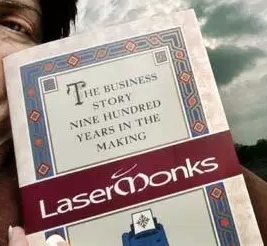
62. LaserMonks by Bernard McCoy
One day when the printer in the church ran out of ink, Father Bernard McCoy searched around the internet to look for a reasonably priced refill, but could not find any. This inspired the reverend to start his own ink-refilling business with his eight brothers at the Cistercian Abbey in Monroe County, Missouri. Since the company’s first full year of operation in 2002, sales increased to $2.5 million in 2005. Today, LaserMonks serves up to 300 orders on a daily basis.
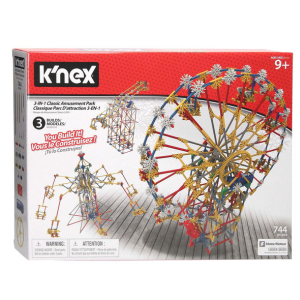
63. K’Nex by Joel Glickman
In 1990 while working in his family’s plastic business, Joel Glickman had an idea of making toys from plastic after fiddling around with some straws. He spent two years developing a plastic construction set just like LEGO but with a different approach.
Instead of focusing on a specific theme or figures (although there are some sets that do have themes), Glickman’s plastic pieces offer virtually innumerable creations since the pieces can interlock at various directions and angles. He called it K’Nex, launched it in 1992, and earned a good amount of money from it. At first, the toy line was rejected by major names including Hasbro and Mattel, but Toys ‘R’ Us agreed to carry K’Nex in 1993. Annual retail sales reach $200 million today.

64. Trunki by Rob Law
Just because your business idea is not successful on Dragons Den, it does not mean everything ends. It can be, as a matter of fact, that the Dragons are just plain wrong. Rob Law, with his four-wheeled animal-faced suitcases called Trunki, moved on from the television show and continued his venture.
In 2007, Rob Law had sold 85,000 units of the suitcases for around £25 each in the UK, making a total of £2,125,000 or more than US $2.8 million. In 2016, Magmatic – the company that manufactures Trunki – sold 3,000,000 suitcases in over 100 countries worldwide.

65. Crocs by Scott Seamans, George Boedecker, and Lyndon Hanson
The original design of the now famous Crocs was made by a Canadian company called Foam Creations. When Scott Seamans wore a pair of the shoes during a trip in the Caribbean, he showed them to his two friends and they came up with a business opportunity.
Soon enough they acquired the license to develop the design and put a catchy name on the product: Crocs. In 2002, Crocs Inc. earned gross sales of $1,000 in America. By 2006, the business expanded quite ambitiously through licensing (such as NASCAR and Disney), and earned more than $200 million in sales in 40 countries. In 2011, thanks to various new designs in addition to the original, the company made $1 billion in revenue.
66. Firehouse Subs by Robin Sorensen and Chris Sorensen
Based in Jacksonville, Florida, Firehouse Subs opened in 1994 and has been growing so fast that it now has more than a thousand franchises in the United States, Canada, Mexico, and Puerto Rico. It all started with a simple idea: open a sandwich shop and decorate everything with firefighter-related items. Robin and Chris Sorensen themselves were firefighters. Total sales in 2011 reached $284.9 million. In 2015, Forbes also recognized Firehouse Subs as one of the best franchises to buy.
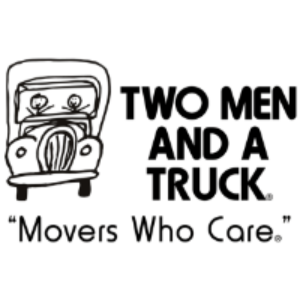
67. Two Men and a Truck by Brig Sorber and Jon Sorber
Founded also by brothers in the early 1980s in Lansing, Michigan, Two Men and a Truck started its service using an old Ford pickup and has now become the largest franchised moving company in the United States, with 293 locations.
It was not all smooth sailing, but things seem to be going well since they started. In 2011, Two Men and a Truck made more than 300,000 moves worth $220 million in revenue.
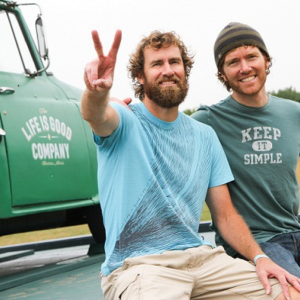
68. Life is Good Company by Bert Jacobs and John Jacobs
Another success story came from Boston brothers, Bert and John Jacobs and their Life is Good t-shirts. They started business in 1989 by selling t-shirts in the streets of Boston out of a van. It was not a very successful venture but the breakthrough was born from an unsuccessful trip. In a gathering with friends after a poor sales trip, they showed them a drawing which eventually turned out to be the start of the path to founding the company.
The drawing was simply a smiling stick figure with a catch phrase “Life is good” next to it. Life is Good Company became official in 1994 and it has expanded its product line from t-shirts to accessories for men, women, and kids as well. People seem to have embraced the image of optimism. In 2011, the company generated $100 million.
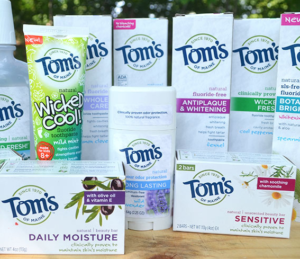
69. Tom’s of Maine by Tom Chappell and Kate Chappell
Founded in 1970 by husband and wife Tom and Kate, the Tom’s of Maine brand now has its line of products sold at over 40,000 retailers worldwide. It is also a subsidiary of Colgate-Palmolive (since 2006).
In 1968, the founders felt that it was too difficult to get natural products made mainly of unprocessed ingredients in Maine, so they decided to start their own company. With initial funding of only $5,000, they began selling natural personal care products. In 2006, Colgate-Palmolive bought of 84% of the company’s value from Tom and Kate for $100 million.

70. Post-it Note
It remains unclear who actually invented the ubiquitous Post-It Notes, however, this brand is officially owned and sold by 3M. Originally launched as “Press ‘n Peel” the product was not as commercially successful as expected, but then the company renamed it as “Post-Its” in 1979 and changed its fortune. Despite a relatively small marketing budget of around $2.8 million, 3M earned $3.47 billion in 2009, a good portion of which from Post-It sales.
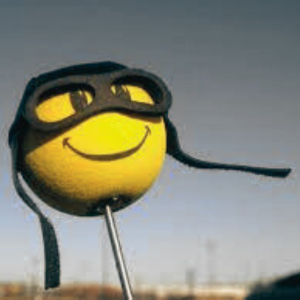
71. Antenna Ball by Jason Wall
Inspired by Jack in the Box commercial, Jason Wall got the idea of manufacturing antenna balls and selling each one at a ridiculously low price. He contacted the company that manufactured similar items, and asked it to produce several antenna balls of Wall’s own design including an 8-ball, an alien, a happy face, and peace sign.
He then put the products in gas stations, bread shops, and mini markets. In less than a week the antenna balls were sold out. Each antenna ball was sold for between 50 cents and $2. By 2000, Walls sold about 4 million antenna balls. Even if everyone purchased the lowest-priced one, he still made $2 million.
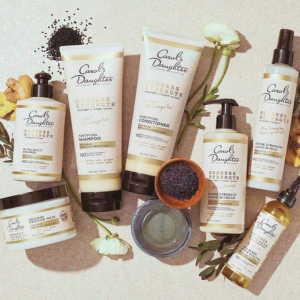
72. Carol’s Daughter by Lisa Price
Starting in the 1980s by making and selling organic toiletries, Lisa Price created Carol’s Daughter in 1993. While her products did not make much of an impact initially, her fortune began to change after she was featured on the Oprah Winfrey Show.
She even received endorsements from many celebrities including Oprah herself and Jay-Z. In a period of one year ending in September 2014, Carol’s Daughter had net sales of $27 million. The brand has been part of L’OREAL since October 2014.
73. I Can Has Cheezburger? by Eric Nakagawa and Kari Unebasami
Thanks to the catchphrase and a tubby cat image, icanhas.cheezburger.com has proven that everybody can make a fortune via the internet. Eric Nakagawa and Kari Unebasami created the website, shared the domain with some friends, and it became a viral sensation. As popularity grew, the website turned into a lucrative online marketing platform. Both creators finally sold the domain to investors for $2 million in September 2007.
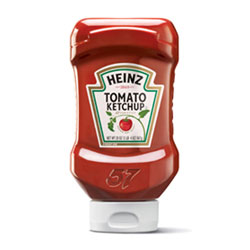
74. Top-down Bottle by Paul Brown
The silicone valve in a top-down bottle was the brainchild of Paul Brown; an idea he brought to life in 1991. When put in a bottle, the valve would open when the bottle was squeezed (therefore creating pressure inside) but it would simply close as the pressure was released.
Brown was able to sell his invention to a lot of manufacturers including Heinz for the ketchup bottle and even NASA for leak-proof drinking systems for astronauts in space. Brown eventually sold the company along with the patent rights in 1995 for around $13 million.

75. Band-Aid by Earle Dickson
In 1920, motivated by the desire to help his rather sloppy wife who often cut and burned herself while cooking, Earle Dickson put gauze on a piece of tape to cover her wounds. He actually cut up a lot of pieces of gauzes and placed them at intervals on one long piece of tape, so his wife could help herself.
Such a simple thing protected the wounds from infection as they healed. Dickson passed on the idea to his employer (Johnson & Johnson) and the invention soon enough reached the production line. Billions of them are now sold every year.
76. The myYearbook by Geoff, Dave, and Catherine Cook
Another example of a success story from the dotcom boom period is the myYearbook. Siblings Geoff, Dave, and Catherine Cook wanted to create an online yearbook to make and meet new friends. This idea was put to practice in 2005 when Geoff became the first investor as well as CEO. Within less than a year, the website had more than a million users. In 2011, Quepasa bought the website for $100 million.
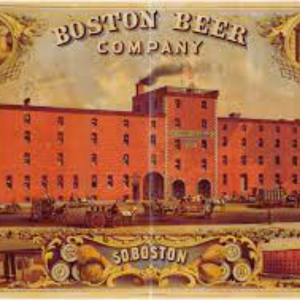
77. Boston Beer Company by Jim Koch
Leaving the beer market because the industry seemed to have been dominated by a few major names, Jim Koch decided to work as a management consultant. He later found out that more people were craving something a little bit different than the typical beers, so Koch dug out his grandfather’s old-fashioned recipes. Once he was satisfied with the brew, he went to some bars and tried to sell his samples.
It was a successful venture that eventually led Koch to quit his day job. Boston Beer Company, the company Koch founded with Rhonda Kallman in 1984, is today the second largest craft beer brewer in the United States (after D. G. Yuengling & Son, Inc) with more than $900 million in revenue in 2014.

78. 1-800-FLOWERS by Jim McCann
To supplement his income as a bartender and social worker, Jim McCann decided to purchase a flower shop in 1976 for $10,000. It was quite a successful business and eventually he could acquire 13 more stores in the New York metropolitan area. Ten years later he managed to acquire 1-800-FLOWERS as his phone number. The company has since expanded to acquire the Popcorn Factory and Fannie May. In 2011, 1-800-FLOWERS earned nearly $690 million in total revenue.
79. Shake Weight by Johann Verheem
There is no way you can shake your fats away and get a better toned body. Weight loss exercise does not work that way, and you don’t even have to be a professional trainer to know that. It didn’t stop Johann Verheem from marketing his rather useless invention literally called Shake Weight on TV, however. Selling for just under $20, Shake Weight generated $40 million in sales in 2010.

80. Chia Pet by Joe Pedott
Manufactured by Joseph Enterprises Inc. and marketed by Joe Pedott, another ridiculous product called Chia Pet captured the market in the 1980s. Pedott first learned about the terracotta figurines from a housewares show in Chicago in 1977.
The first mass-produced Chia Pet in the shape of Aries the Ram was created in September of the same year. The idea was that you could plant Chia seeds in the figurine, and when grown, the leaves would look like animal fur. It was a success. As of 2007, the company sold 500,000 Chia Pets annually.

81. Craigslist by Craig Newmark
As a newcomer to San Francisco in the early 1990s, Craig Newmark decided to make a website where people could see upcoming local events so they could possibly meet and make new friends in the area. However, early development had no moderation in terms of contents or posting.
What Newmark had not realized was that people could also use the website to upload non-event postings. Noticing the potential, Newmark worked to improve the website and remove some of its early limitations. Craigslist.com was up and running for the first time in 1996. Although the company didn’t disclose financial information, some analysts estimated its annual revenue to be in the range $150 million in 2007.
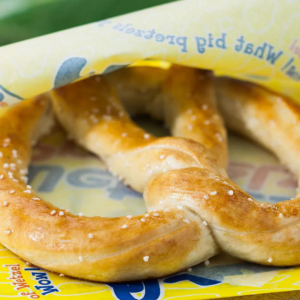
82. Wetzel’s Pretzels by Rick Wetzel and Bill Phelps
Rick Wetzel’s wife had the idea of opening a shop to sell big soft pretzels to people in the mall. Wetzel shared this idea with his friend, Bill Phelps, during a business trip while they were working for Nestle. As the story goes, they actually wrote a business plan on a napkin. Instead of trying to market the pretzels directly, Wetzel and Phelps invited a mall landlord to their place to try their recipe. The landlord liked it, and soon the first shop was open. In 1995, they received severance packages from Nestle and used the money to expand the business. In 2011, the revenue reached more than $100 million.
83. West Point Thoroughbreds by Terry Finley
The success story of Terry Finley started in 1990 when he and his wife Debbie bought a horse named Sunbelt for $5,000. Sunbelt won its first race, and Finley was captivated with the business opportunity from the victory. At the same time, he was finishing his military service and working for an insurance company. He quit his job and focused instead on developing a horse breeding farm. The West Point Thoroughbreds officially started in 1991. Since 2007, business has been great for the couple and their horses have won more than 20% of their race and annual sales of around $7 million.
84. Kayak by Paul English and Steve Harner
After spending about an hour of talking and drinking, Paul English and Steve Harner founded Kayak, a search engine designed specifically for travelers. Kayak was once the king of its kind with the ability to search hundreds of travel sites and help travelers find the best deals on rental cars, hotels, and airfare. Founded in 1994, Kayak earned tens of millions of dollars within just a few years of launching. In a period of one year ending in September 2011, the company reported it had earned $170.6 million in revenue. A year later, the revenue increased to $292.7 million.
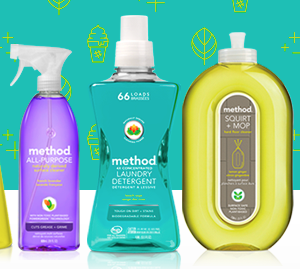
85. Method by Adam Lowry and Eric Ryan
At the time when household cleaner products were dominated by the likes of Clorox and Procter & Gamble, a new company who wanted to enter the market and achieve success needed to do it with great disruption. That was exactly what Adam Lowry and Eric Ryan did with Method.
Established products from big names were using harsh chemicals as ingredients in their cleaning solutions, so something different was needed. Lowry and Ryan focused on environmentally-friendly solutions and attractive packaging. The company became one of the fastest-growing businesses in the United States, with more than 100 products and gross revenue of well over $100 million.
86. Marshmallow Fun Company by Kim and Beaver Raymond
At their son’s birthday party in 2002, Kim and Beaver Raymond made a marshmallow shooter to entertain their 15 guests. The shooter was made of PVC pipe so it was simple, rough, and effective, but it was just enough to inspire the family to start a business venture. The food fight was pretty interesting indeed, and the couple gathered some friends to discuss the idea. Long story short, Marshmallow Fun Company was born in 2010 and has sold millions of marshmallow shooters so far.
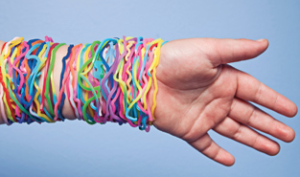
87. Silly Bandz by Robert J. Croak
Robert Croak – also the owner of BCP Imports, popular for distributing the Livestrong wristbands – did not invent the rubber band. He spotted animal-shaped rubber bands on a business trip and decided to improve the design and market it as a kids’ fashion accessory.
He did not change the original design very much, but he made it thicker and larger. The original design was created in Japan and won the 2003 Best Design Award at the Japanese National Competition. Silly Bandz, as Croak called his design, became widely distributed for the first time in the United States in November 2008. Millions of packs were sold in 2011, at a price of $5 per pack.

88. Pet Butler by Matt Boswell
Having been interested in running a small business since childhood, Matthew Osborne had to wait until the circumstances forced him to try and sell something to make a better living for himself. Prior to Pooper Scooper, he had worked two full-time jobs for less than $6 an hour.
In just few hours he was between jobs, learned about demographics, and realized that there were 100,000 dogs within just 15 miles from his home. Business slowly took off but it was steady growth nevertheless. After 10 years, Osborne sold his business and started Pooper-Scooper.com which contains an international directory for pet waste removal services. Thanks to Mathew Osborne and his website, Pet Butler owned by Matt Boswell has become one of the largest companies of its kind in the country, serving around 3,000 customers. By 2010, Boswell earned around $500,000 a week.
New Product Development for Your Invention
Do you want to develop a new invention idea or consumer product? Get a free quote on new prototype design, CAD services and product development on demand.
